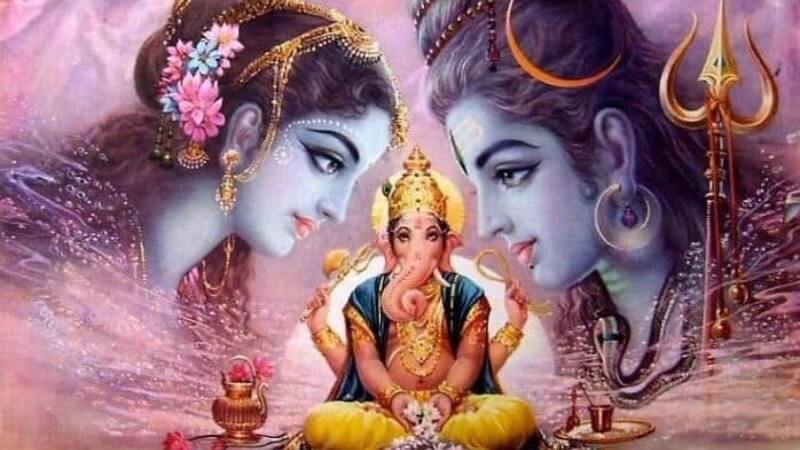Vital Life Lessons From Lord Ganesha On Ganesh Chaturthi
When the Nashik dhol’s echoing sound can be heard all around you, you know it’s that time of year. Ganesha statues can be seen all around you, either being carried to the pandal or already standing there. Your child will undoubtedly have questions regarding the who, what, why, and how of this celebration (Ganesh Chaturthi), especially the pudgy little God.
Life Lessons From Lord Ganesha- The best ideal time for caregivers to share some words of wisdom with their dear ones is now when little Lord Ganesha can serve as an inspiration. The life and teachings of our beloved Ganesha can inspire our kids and adults in unimaginable ways. After all, it doesn’t happen very often that a flawed and strangely mismatched representation of God can be worshipped as a real idol.
As a result, we have the life-long blessings of our dear Lord Ganesha that can brighten up our world in unexpected ways.
Life Lessons From Lord Ganesha on Ganesh Chaturthi, those lifestyle classes can set you at the proper course for lifestyles, so keep on reading.
Table of Contents
Birth Story of Lord Ganesha

Lord Ganesha was created by Goddess Parvati to watch over the entry as she bathes. At the same moment, Lord Shiva went home, but he was not permitted to get inside. Shiva’s divine wrath caused Ganesha to lose his head, yet he didn’t violate his duties or betray the faith of his creator. When Parvati discovered this, she became furious and made the decision to end the world. Shiva, who corrected his error and granted Ganesha a new life and the position of being the most important of the gods, stopped her.
Life Lessons for Lord Ganesha-The Teachings for Every Generation
Accept Your Flaws
Do some fun activities with your child and teach them about embracing themselves as they are by using the Ganesha idol. It has an elephant-like head on a human body. What greater way to explain to your young child that nobody is perfect or whole? Despite this, we may and must be able to comprehend who we are as individuals as well as those around us.
Don’t Behave Rashly
Always pause before acting out of anger because words and deeds last a lifetime. Take your internal temperature and give yourself time to calm down the next time you notice that your heartbeat is a little faster in your veins. Your perspective on the circumstance and how to handle it will alter, shocking you.
More Listening than Speaking
The Ganesha idol’s elephant ears might serve as an example of the idea that listening carefully is crucial. When someone expresses their sorrow or loss to you, they typically only want a sympathetic ear. You just need to listen as the speaker shares his thoughts without interjecting your own comments or advice. You can teach your young child to listen first before responding when someone approaches them to communicate.
Never Give Up
The idol’s tusk is another bodily feature that might be used to instruct your child. Request that he notices the fractured tusk. Tell him the tale of how this came to be. According to legend, Ganesha’s pen broke while Sage Vyasa dictated the Mahabharata to him. Ganesha gave up his tooth and utilized it as a pen to carry on with his work so that he wouldn’t be interrupted.
This Ganesha tale can be utilized to reinforce the lesson of “make the most of what you have” as well as to encourage kids to never give up. It can also be used to train people to give up what they value for a larger good.
Embrace Kindness and Forgiveness
Another Ganesha tale can be narrated to instill kindness in your youngster. Ganesha was once welcomed to a large feast, but because he enjoys sweets so much, he overindulged. Because of this, his stomach was swollen, and in an effort to conceal the problem and avoid looking foolish, he wrapped a snake around his tummy. He waited till after dark to depart for the back so that no one would be aware of this. By chance, the moon caught on and made fun of Ganesha for it. This infuriated Ganesha, who then cursed the moon and declared that he would be invisible going forward.
The moon immediately recognized his error and asked Ganesha for forgiveness. However, Ganesha was unable to lift the curse; as a result, he modified it slightly, declaring that now the moon would eventually become hidden on one day every month, as it would become smaller with each passing day of the month. We refer to that day as Amavasya (without moon) and it is regarded as unlucky in our nation.
This narrative and Ganesha’s deed of mercy can be used as lessons on kindness and forgiving those who beg for your forgiveness.
Your Universe is Your Parents

Once, Shiva and Parvati challenged both of their boys, Ganesh and Karthik, to prove their mettle. According to the legend, they were both given the assignment to round the globe three times, and whoever finished the mission first would win a miracle fruit, which would provide its owner immortality and supreme knowledge. Karthik immediately got going since he wanted to get going quickly and complete the assignment correctly. Ganesha, who was the more intelligent of the two, understood that Kartik’s agility and the speed of Kartik’s chariot, the peacock, would be superior to those of his bulky frame and slower vehicle, the rat.
He put his thinking cap on and found the best answer. “For me, my parents, they are my universe,” he thought as he turned to face his parents. Instead of wasting my time across the globe, I would rather go around them. It goes without saying that when Karthik came back, he not only discovered that he had forfeited the race, but also that he had been thoroughly defeated!
This Ganesha story teaches us to honor our parents as well as to think creatively in a particular circumstance. You shouldn’t let your physical limitations hold you back. One can always win a lost conflict by using wisdom and intelligence.
Always be Humble
Insecurities are loud, whereas confidence is quiet. Being humble is a highly endearing quality that is getting harder to come by. Nobody respects those who constantly brag about their accomplishments. Building authentic and deeper connections with the individuals you work with can be facilitated by humility.
Maintain Equilibrium
If you look closely at the Ganesha idol, one of Lord Ganesha’s feet is on the ground and the other is folded, as you can see. You can utilize this to impart the value of balance to your dear ones. Inform them that they must always maintain an equilibrium between their inner selves – their internal happiness, also known as spirituality – and the materialistic satisfaction they will experience as a result of their fame and money.
Educate them that despite having all the world’s worldly goods, they will never be happy if they don’t connect with their inner selves and understand what makes them happy in the first place.
In order to live a happy and contented life, it is equally necessary to keep a good balance between one’s spiritual and material requirements, even though it may be challenging to let rid of one’s worldly desires.
Recommended – The Ancient Holy City of Vellore
Knowledge and Success Walk Hand-in-Hand

Goddess Saraswati and goddess Laxmi are displayed on either side of our pudgy God in the southern and northern states of the nation’s Ganesha idols. Your youngster can learn a lesson from this as well.
Tell the youngster that while Saraswati is the goddess of learning and wisdom, Lakshmi is the goddess of luck and wealth. This can emphasize the idea that success will inevitably follow knowledge and wisdom. Consequently, success and knowledge go with each other.
Through these lessons, I hope that Ganesh Chaturthi will be more enjoyable for you and your loved ones. Enjoy the celebrations! Bolo Ganpati Bappa Mourya!











